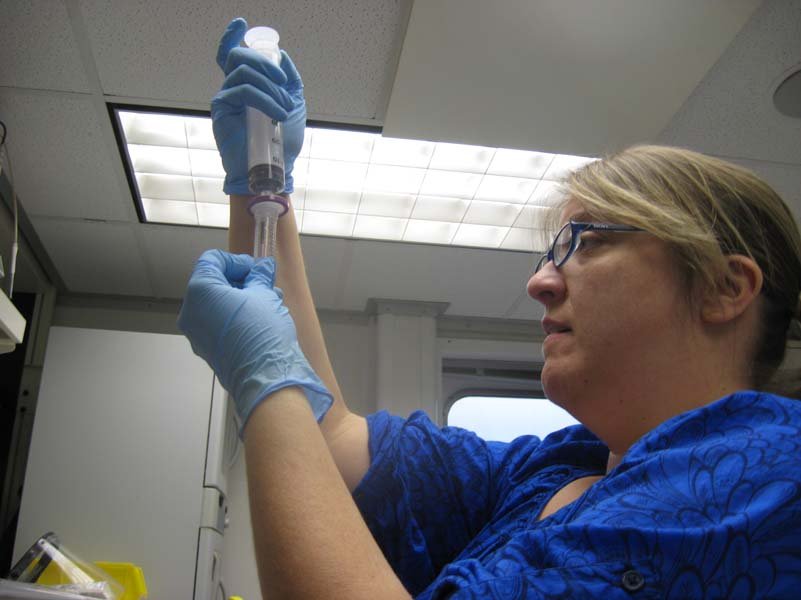
Micro with Maria
All the labs on the JR have their own characteristic personalities, if you will. For instance, as you walk through the parts of the lab, you might hear classical music playing in one, and rock in another.
The core lab contains several smaller work areas within it – the sampling area, the description table, smear slide microscope stations, paleomag and physical properties areas as well as the micropaleontology area. It’s a part of the ship that’s always full of people and all kinds of things are going on. Cores are being labeled and sampled, sedimentologists are discussing their interpretations of the core. Now that we’ve gotten into harder sediments, the buzz of the rock saw is an ever present background noise. In short, it’s a bustling active place where there is lots of interaction going on.
Yesterday, I got to spend some time in the microbiology lab for the first time. We only have one microbiologist on board, and I was able to give her a hand with some of her sample preparation. Microbiology is located in the Geochemistry Lab, one deck down from the core lab. It has a very different personality. There are two Geochemists and two technicians, plus our microbiologist Maria in this lab during our shift. Here the background noise is the quiet hiss of the autoclave, the hum of the gas chromatograph, or the faint bubbling of the testing for Total Organic Carbon. It’s a quieter lab – probably because there are fewer people in it at one time. The machinery is very precise and the room looks much more like what my students picture when you say “lab”.
Maria’s work involves keeping everything very sterile because she is testing for microbial contamination in the cores so you have to be sure not to introduce anything into the samples when you are preparing them. It’s a multistep, complicated (to me anyway!) process. I helped by filling vials with a solution of seawater and formalin. After that, I measured set amounts of sediments from containers Maria had and added them to the vials of solution. Today I got to go back and help her with a slightly different set of samples by injecting a seawater solution into vials with a needle syringe. I felt like a nurse, but it was fun, and I was glad to be able to help her – she is the only scientist on board who doesn’t have a counterpart on the opposite shift, so she gets a little snowed under sometimes. I can’t wait to see what else she’ll show me!

Maria-Cristina Ciobanu – Microbiologist (photo by Bill Crawford)